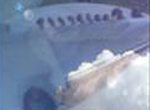xysoom


Registrato: Mag 15, 2020
Messaggi: 1676
|
 Oggetto: The Human Hair in Your Wig May Have Been Pulled from Shower Oggetto: The Human Hair in Your Wig May Have Been Pulled from Shower
Inviato: 13-06-2022 1:36:04 |
 |
The Human Hair in Your Wig May Have Been Pulled from Shower Drains
The grossest moment in Just Extensions, the self-produced documentary by L.A. serial entrepreneur Riqua Hailes that investigates the global human hair trade, is probably the scene where she arrives at a human hair market after a 17-hour drive through rural China and ends up picking through a large burlap sack filled with matted hair balls for sale.To get more news about human hair wigs, you can visit monavirginhair.com official website.
In the trade, they call this “fallen hair,” or hair that has been pulled out of hair brushes, shower drains, and even the trash in rural villages and cities alike in Asia. And if you wear extensions, you might have it on your head right now.
Hailes, obviously, is not pleased to find out that the expensive extensions she’s been purchasing for her clients started their life as something that would make you gag if you found it in the gym shower. But it’s not the cleanliness that bothers her. It’s the performance.
I don’t care how much cleaning you do to it,” she confides to the camera as she walks away. “It won’t be luxurious and flowy. It will matte up just like it looks in that bag.”
What Hailes saw in China is shocking, but standard. You may think, like I did, that all the real human hair for upscale wigs and extensions comes from women who’ve decided they need a change (or some extra cash) and sat down in a salon chair to have their ponytail cut off. But a glossy ponytail of real, virgin, non-toxic hair, known in the industry as “remy hair,” is as rare and expensive as an Hermes Birkin bag.The truth is, the global human hair industry has quietly gone through a transformation in the past few decades similar to the rise of fast fashion. But worse. Consumers want affordable hair that they can switch out as quickly as their outfits. Though, while clothing is required to have a label telling you where it was made and what it’s made of, “Hair is a completely unregulated industry,” says celebrity wig maker Merria Dearman, who has created hyper-realistic wigs for photoshoots and music videos featuring Naomi Campbell, Christina Aguilera, and Karlie Kloss’ InStyle cover.
“I've been into a shop and bought 'remy’ hair that has synthetic in it,” Dearman says. “They can say it's from anywhere.”
Yes, even so-called “Brazilian” hair, prized for its luxurious bounce, actually comes from India, if you’re lucky, where devotees have their heads shaved at large Hindu temples as an offering to the gods. Remy hair might come from desperately poor women in Asia and Eastern Europe, who earn a few dollars for what will eventually sell for thousands — or it might have been forcibly taken from women by abusive partners or thieves.
Most likely it comes from China, which exported $820 million worth of mass-produced human hair globally in 2019. The United States is by far its biggest buyer, accounting for four-fifths of all Chinese hair sold, according to figures from the UN Comtrade Database. “There are always some exceptions, but the hair from China is never remy hair,” Hailes says.
Remy hair that is carefully cut from someone’s head and tied has the distinct advantage of being less likely to tangle, because the cuticles (the microscopic scales you see being smoothed down in shampoo commercials) are all facing the same direction: down, away from the scalp. To imitate remy hair, tangled fallen hair is dunked by workers in tubs of chemicals to strip the cuticles. Then it’s combed out and sorted into similar lengths, and coated with silicone for a faux-glossy shine.
The hair industry is even more secretive than the fashion industry, and even the masters couldn’t tell me exactly which chemicals are used. “I saw and smelled the chemical baths in a dozen Chinese factories,” says Hailes. “At the time, I couldn't get a straight answer, but across the board they all admitted to a chemical or acid bath in the processing of hair.”
Dearman, who also toured human hair factories in China, says the baths smelled like ammonia, and that she saw them using fabric dyes, which are highly toxic and carcinogenic, on the hair. “Who knows where they dump the chemicals,” she says. “I didn't stick around long enough to find any of that out.”
Dearman also says the workers didn’t have protective gear. Without knowing exactly what’s in those acid baths, Dr. Martin Mulvihill, co-founder of SaferMade, an industry group that helps fashion brands detoxify their supply chain, could only point out that, “Exposure to acid in the workplace presents both an immediate danger from chemical burns, as well as long term respiratory damage depending on the ventilation and types of acid being used.
|
|
![Show/hide content [x]](themes/dragonfly/images/minus.png) Menu Principale
Menu Principale HOME
HOME NADA YOGA
NADA YOGA AMBIENTI SONORI
AMBIENTI SONORI VISUAL SOUND
VISUAL SOUND MUSICA LIVE
MUSICA LIVE INDIAN MUSIC
INDIAN MUSIC UTILITA'
UTILITA' AREA RISERVATA
AREA RISERVATA![Show/hide content [x]](themes/dragonfly/images/minus.png) Info Utente
Info Utente![Show/hide content [x]](themes/dragonfly/images/minus.png) Floating Sarod
Floating Sarod![Show/hide content [x]](themes/dragonfly/images/minus.png) Discografia
Discografia![Show/hide content [x]](themes/dragonfly/images/minus.png)
![Show/hide content [x]](themes/dragonfly/images/minus.png) Visite
Visite






